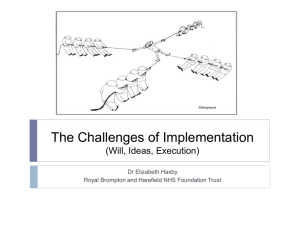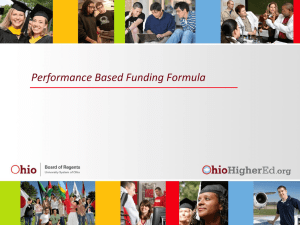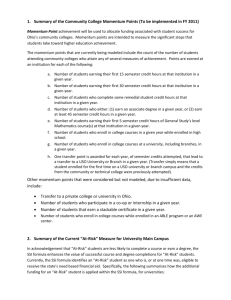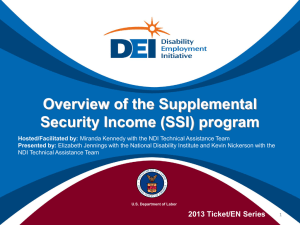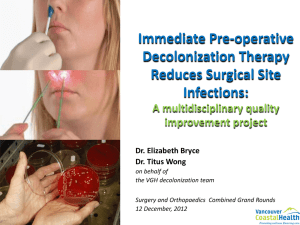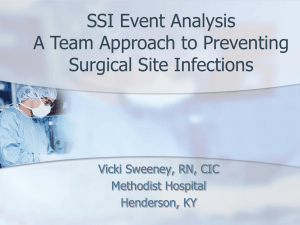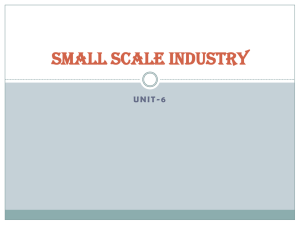OBOR - David Cannon Presentation
advertisement
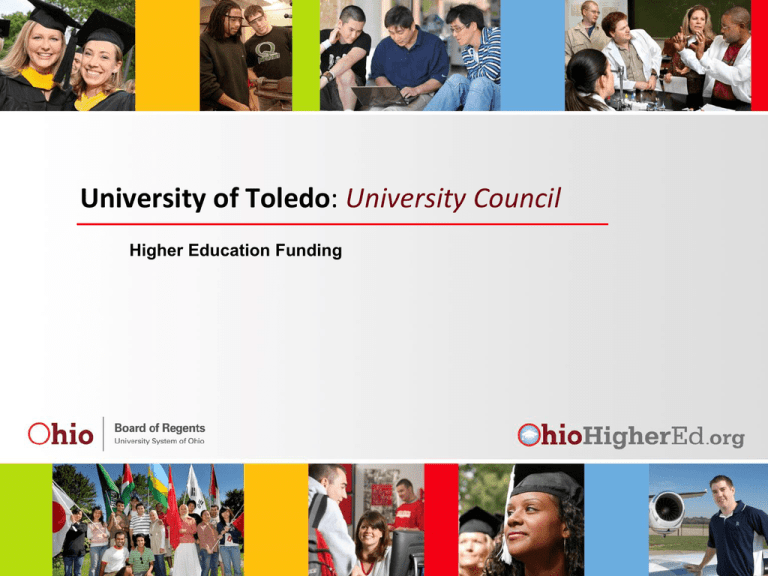
University of Toledo: University Council Higher Education Funding Higher Education Funding • Overview of BOR Budget – BOR FY13 GRF Appropriation $2.315 Billion • BOR has 43 GRF line items • BOR largest ALI’s – SSI – $1.751 Billion (75.64%) – Debt Service/Capital Component - $272.8 Million (11.78%) – Financial Aid - $131.7 Million (5.69%) • OCOG - $91.4 Million – Allocated by Sector – Carry Over - $11.1 Million – Proprietary $6.0 Million Casino Funding 2 Higher Education Funding • National Guard Scholarship - $18.1 Million • Choose Ohio First - $16.2 Million • War Orphan Scholarship - $5.4 Million – Dependents of deceased or disabled veterans of the armed services of the United States – Medical Funding - $41.9 Million (1.81%) • In addition to SSI Medical Funding - $106,202,378 • $35.6 Million Clinic Support • $6.3 Million Medical Subsidy – Primary Care – Geriatric – Family Practice 3 Higher Education Funding – Partner Operating Subsidies - $16.7 Million (.72%) • OhioLINK - $6.1 Million • OARNet - $3.2 Million • Supercomputer - $3.4 Million • eStudent Services - $2.5 Million • Library Depositories - $1.4 Million – Other Subsidies • AWE - $15.3 Million • ABLE - $7.3 Million • Cooperative Extension – $33.1 Million • Agriculture Research - $22.2 Million • Central State/Shawnee State - $13.2 Million 4 Higher Education Funding – BOR Operating Funds - $6.8 Million (.29%) • Operating - $2.3 Million • Articulation & Transfer - $2.0 Million • HEI – $800,000 • State Grants - $1.2 Million • Economic Growth Challenge - $440,000 5 Higher Education Funding • FY2014/2015 Budget Process – OBM request for 90%/100% Scenario for GRF Funding – All Agencies required to submit budget request for these scenarios – SSI/Subsidy ALI’s continuation funding – Debt funding determined by OBM • Higher education treated very well In Governor’s Proposed Budget – BOR received funding requested for ALI’s 6 Higher Education Funding • SSI – $1.784 Billion – FY14 - $33.0 Million Increase (1.9%) • $411,247,477 – Community Colleges • $1,372,968,020 – Universities – $116,181,104 – Regional Campuses – $1.818 Billion – FY15 - $34.0 Million Increase (1.9%) • $419,101,428 – Community Colleges • $1,399,124,069 – Universities – Regional Campuses Merged 7 Higher Education Funding • Current University Distribution of SSI – 61% Course Completions - $717.0 Million/UT $62.2 Million • At-Risk Factors • EFC – less than 2,190 • Remedial students • STEM Weighting • Model weights • Range from 1.0 to 1.8798 • Statewide average cost of course by Model – 18% Degree Attainment - $245.5 Million/ UT $17.4 Million • At-Risk Factors • EFC/Remedial/Heritage/Age • No STEM Weighting – 20% Doctoral/Medical - $264.9 Million/UT $24.3 Million 8 Higher Education Funding – Doctoral – $158.7 Million • 50%/40% - Share of FTE • 25%/30% - Share of Degrees • 12.5%/15% - Share of Research Grant Activity • 12.5%/15% - Quality Measures – Medical - $106.2 Million • Med I - $19.9 – OSU – Veterinary/Dental • Med II - $86.3 Million – FTE Basis 9 Higher Education Funding • Current University Distribution of SSI – Access Challenge • 2009 Distribution Formula • $3.9 Million • UT $0 – Plant, Operation, Maintenance (POM) • • • • 2009 Formula Provided funding for those institutions that have access space Redistributes funding from other schools UT $786,516/Central State $1,614,392 – Stop loss • 96% • Redistributes funding from schools above stop loss • UT pays $262,680 10 Higher Education Funding • Revised Distribution of SSI for FY14 – 30% Course Completions - $354.4 Million • At-Risk Factors • No change in STEM weighting – 50% Degree Attainment - $628.4 Million • At-Risk Factors • Added STEM weighting for degrees • STEM weight for degree matches STEM weight for courses – 20% Doctoral/Medical – $270.1 Million • Percentage based so increase with additional appropriations • Remove Quality Measures and include in FTE 11 Higher Education Funding – Access Challenge • Kept in formula through FY15 • Removed in FY16 • UT $0 – Plant, Operation, Maintenance (POM) • Kept in formula through FY15 • Removed in FY16 • UT $809,760/Central State $1,619,668 – Stop loss • Removed Stop Loss – Three year average for all data in formula 12 Higher Education Funding • Revised Distribution of SSI for FY15 – 30% Course Completions • At-Risk Factors student based – 50% Degree Attainment • At-Risk Factors student based – Remove separate funding for regional campuses • Regional campus students included in university performance metrics • Emphasis on graduation 13 Higher Education Funding • Revised Distribution of SSI for FY15 – All campuses can award associate degrees • Previously only Access Challenge funding schools allowed • Stackable degrees • Foresee increased number of AA’s due to funding – Proportional degree funding • Splits degree funding based on cost of course at USO Institution • Bonus of cost of degree from outside USO to degree granting institution – Degree funding awarded to universities for out-of-state students remaining in Ohio to work or continue education 14 Higher Education Funding • Current Regional Campus Distribution of SSI – 100% Course Completions – Access Challenge • $12.9 Million – Plant, Operations, Maintenance (POM) • 2009 Formula • Provided funding for those institutions that have access space • Redistributes funding from other schools – Stop Loss • 96% • Redistributes funding from schools above stop loss 15 Higher Education Funding • Regional Campuses Revised Distribution of SSI – FY14 – 100% Course Completions – Access Challenge Eliminated • Funding moved to course completion – Plant, Operations, Maintenance (POM) Eliminated – Stop Loss Eliminated • Regional Campuses Revised Distribution of SSI – FY15 – Uses same formula as university main campuses 16 Higher Education Funding • Current Community College Distribution of SSI – 90% Enrollment – 10% Success Points – Access Challenge • 2009 Distribution Formula • $54.5 Million – Stop loss • 96% • Redistributes funding from schools above stop loss 17 Higher Education Funding • Community College Revised Distribution of SSI – FY14 – – – – 50% Enrollment 25% Success Points 25% Course Completions Access Challenge Eliminated • Funding included in performance funding – Stop loss • 97% • Redistributes funding from schools above stop loss 18 Higher Education Funding • Community College Revised Distribution of SSI – FY15 – All funding completion based • Study to define “completion” • Courses • Associate Degrees • Certificates • Credentials • Transfers • Job Training – Stop Loss Eliminated – Study to Determine At-Risk Factors for Community College Students – Review Funding Allocations 19 Higher Education Funding • OCOG – As Introduced Version - $87.9 Million – $41.0 Public – $41.0 Private – $5.968 Proprietary • OCOG –House Adopted Version - $89.1 Million – $41.0 Public – $41.0 Private – $7.126 Proprietary • Original FY12/13 appropriation $80.3 million GRF 20 Higher Education Funding • Other Changes to OCOG – Reserve Account – No casino funding • Safety Officers – Maintain funding for Safety Officers Scholarships – 100% tuition coverage at public institutions – Amount to be determined at private institutions • Funding for Privates based on funding for Publics – FY13 was $6,234.00 – Estimated at $6,618.00 for FY14 21 Higher Education Funding • War Orphans – Increase appropriation to $5.5 million • Original FY12/13 appropriation $4.8 million • Goal to fund 100% • Choose Ohio First – Increase appropriations to $16.7 • Original FY12/13 appropriation $15.6 • Fund new cohort of students • National Guard Scholarship FY14 - $16.7 Million – Fully fund National Guard members • • • • FY10 Expenditures – 15.1 million FY11 Expenditure - $14.9 million FY12 Expenditure - $14.8 million FY13 Estimated - $16.4 million 22 Higher Education Funding • Budget Process – House Finance Committee testimony • OCOG – Community Colleges – Pell First • • • • • • • • Co-op Internship Affordability Digital Textbooks Central State Historical SSI Sea Grant Faculty Workload College Credit Plus 23 Higher Education Funding • Budget Process – House Education Sub-Committee testimony • OCOG – Community Colleges – Pell First • • • • Co-op Internship Affordability Sea Grant College Credit Plus 24 Higher Education Funding • Limit of liability for private nonprofit institution for transmission of data to Regents or state agency, when data is later subject to a data breach due to – An action by the recipient agency – An action by a third party after information had left the possession of the private institution but before it was received by BOR or other agency • SSI Bridge Funding – $8.0 million for colleges and universities that receive less SSI funding in FY14 than FY13 • Residency status for state subsidy and tuition purposes – If a state institution issues a letter or utility bill for use as proof that the student is a qualified Ohio voter – Student would receive in-state tuition – Subsidy eligible 25 Higher Education Funding • Undergraduate Tuition Guarantee Program – Guarantees a cohort of students a set rate for general and instructional fees for four years – Allows a one-time 6% tuition increase – Can request fee in excess of 6% with BOR approval – Number of credit hours to earn degree in each major – Provides protection to student if they cannot finish in four years due to various conditions • Available courses • Military • Uncontrollable circumstances 26 Higher Education Funding • Tuition Caps – – – – 2.0% or $188 for Universities 2.0% or $114 for Regional Campuses $100 for Community Colleges Cap is based on annual tuition from previous year • SB1 – $25.0 million Workforce Development Revolving Loan Fund • • • • BOR loan to institution Institution loan to student Third party loan servicing agent Preference given to projects with business partners willing to repay loan 27 Higher Education Funding • Capital Funding – Public-Private Partnerships • Mutually beneficial arrangement that brings faculty, researchers, students, and industry professional under one roof to work on states most pressing issues – Workforce Development • Projects viewed as necessary to meet immediate workforce needs, such as shale gas industry, were given highest priority – Interdisciplinary Approach • Internal collaboration to encourage natural synergies between traditional laboratory sciences and market-enhancing practicality of engineering – Long-term Maintenance • Projects that focus on either modernizing student learning environments or reducing on-going operating costs 28 Higher Education Funding 29 Higher Education Funding • Capital Funding – Public-Private Partnerships • Mutually beneficial arrangement that brings faculty, researchers, students, and industry professional under one roof to work on states most pressing issues 30 Higher Education Funding • Capital Funding – Workforce Development • Projects viewed as necessary to meet immediate workforce needs, such as shale gas industry, were given highest priority 31 Higher Education Funding • Capital Funding – Interdisciplinary • Modernize STEM facilities to encourage increased interdisciplinary collaboration and innovation 32 Higher Education Funding • Capital Funding – Long-term Maintenance • Protect investment on campuses and maintain basic infrastructure 33 Higher Education Funding 34 Higher Education Funding • Senate Bill 6 Ratios – Ratios to analyze financial health • Viability Ratio – Expendable Net Assets/Plant Debt – Fee Pledges » BOR approval to issue debt backed by general receipts pledge • Net Income Ratio – Change in Total Net Assets/Total Revenues • Reserve Ratio – Expendable Net Assets/Operating Expenses – Weighted for Composite Score • Viability - 30% • Net Income - 20% • Primary Reserve – 50% 35 THANK YOU

